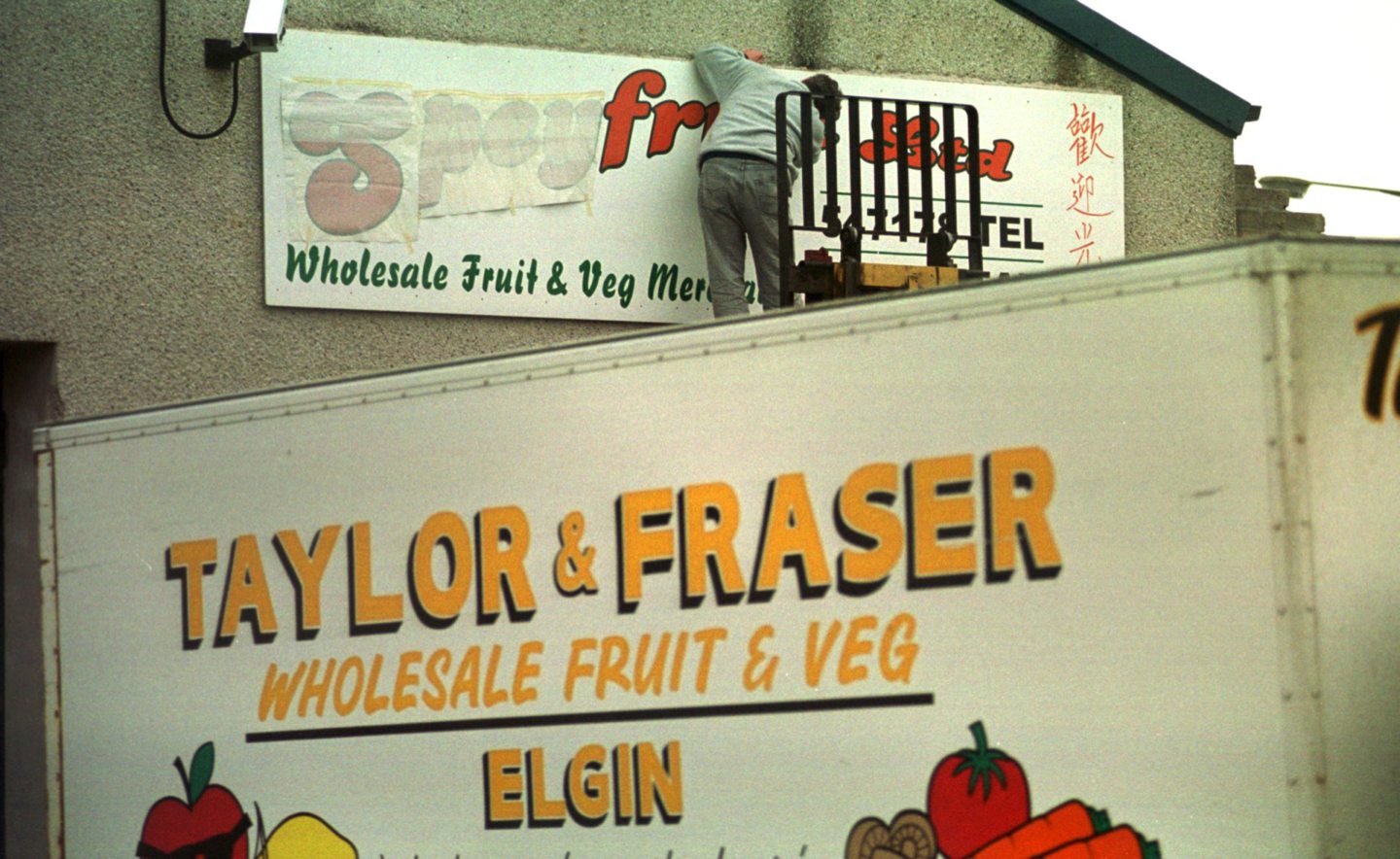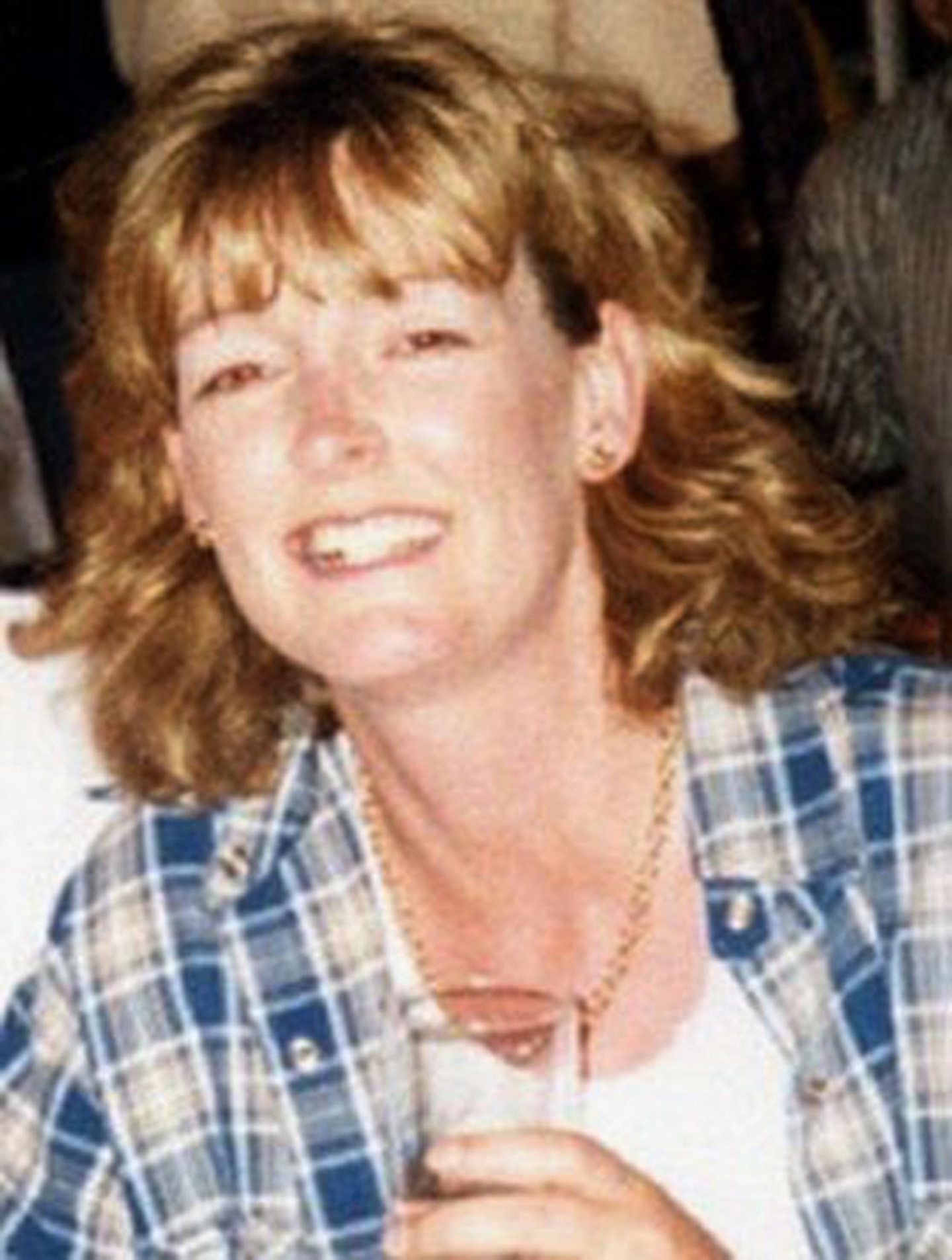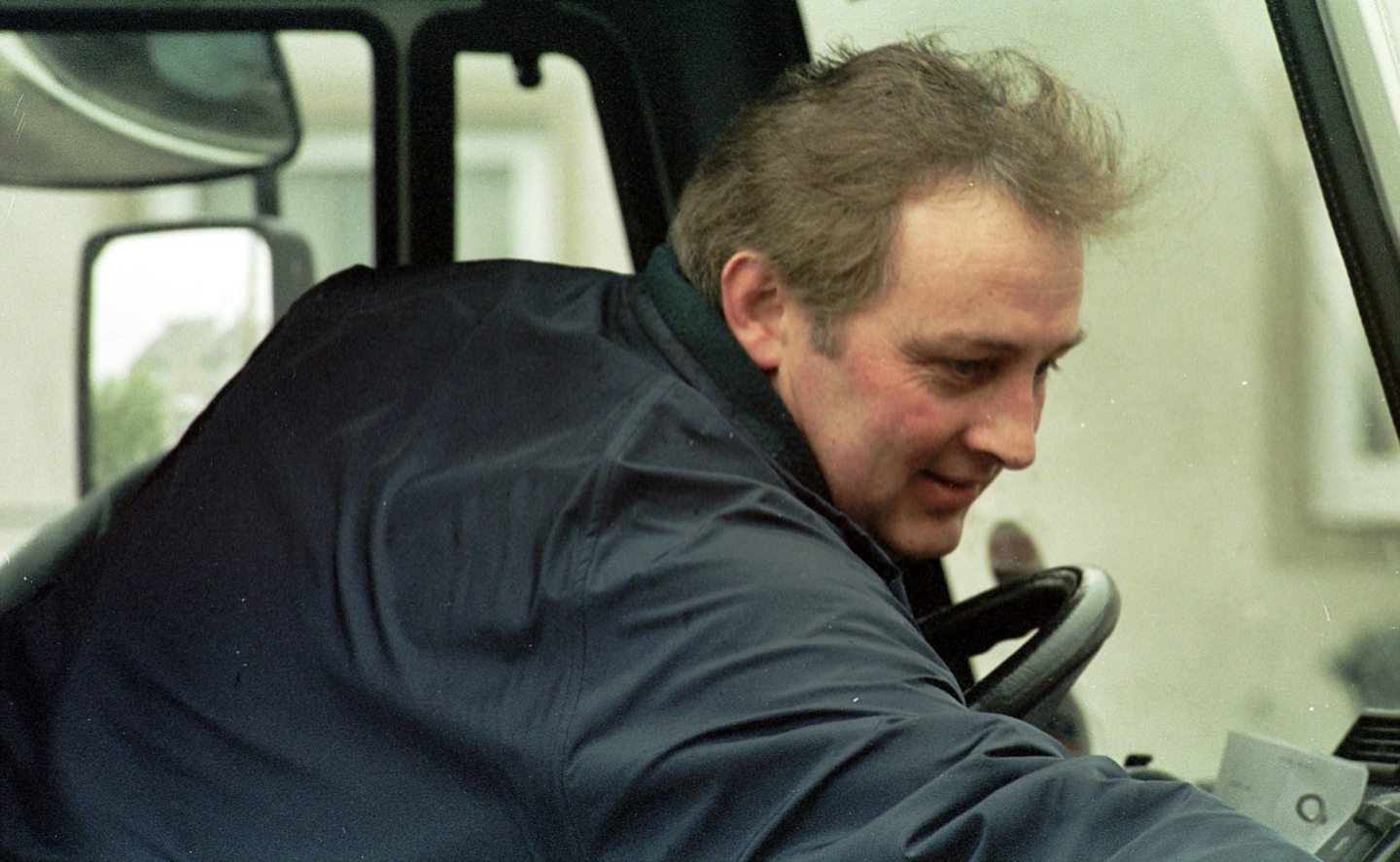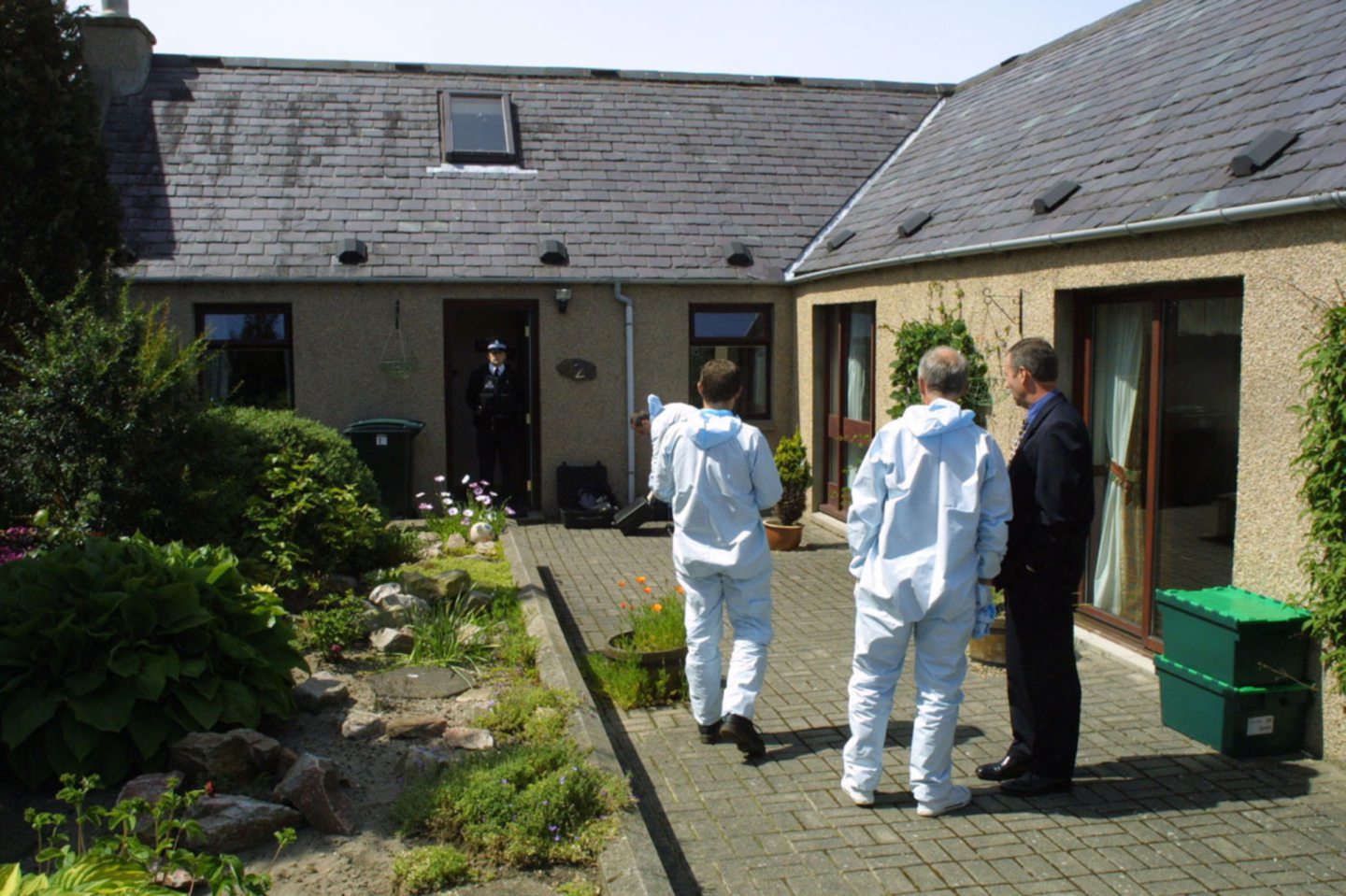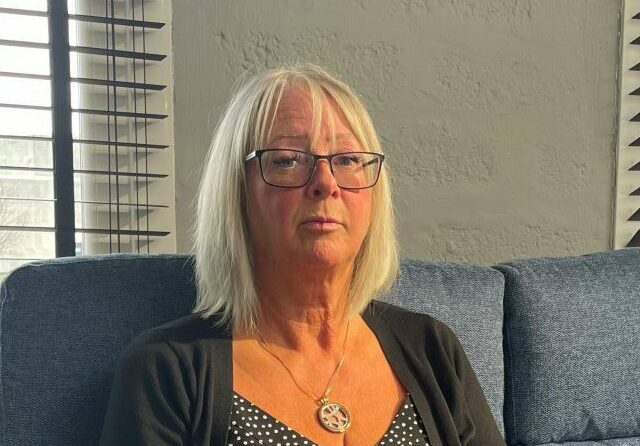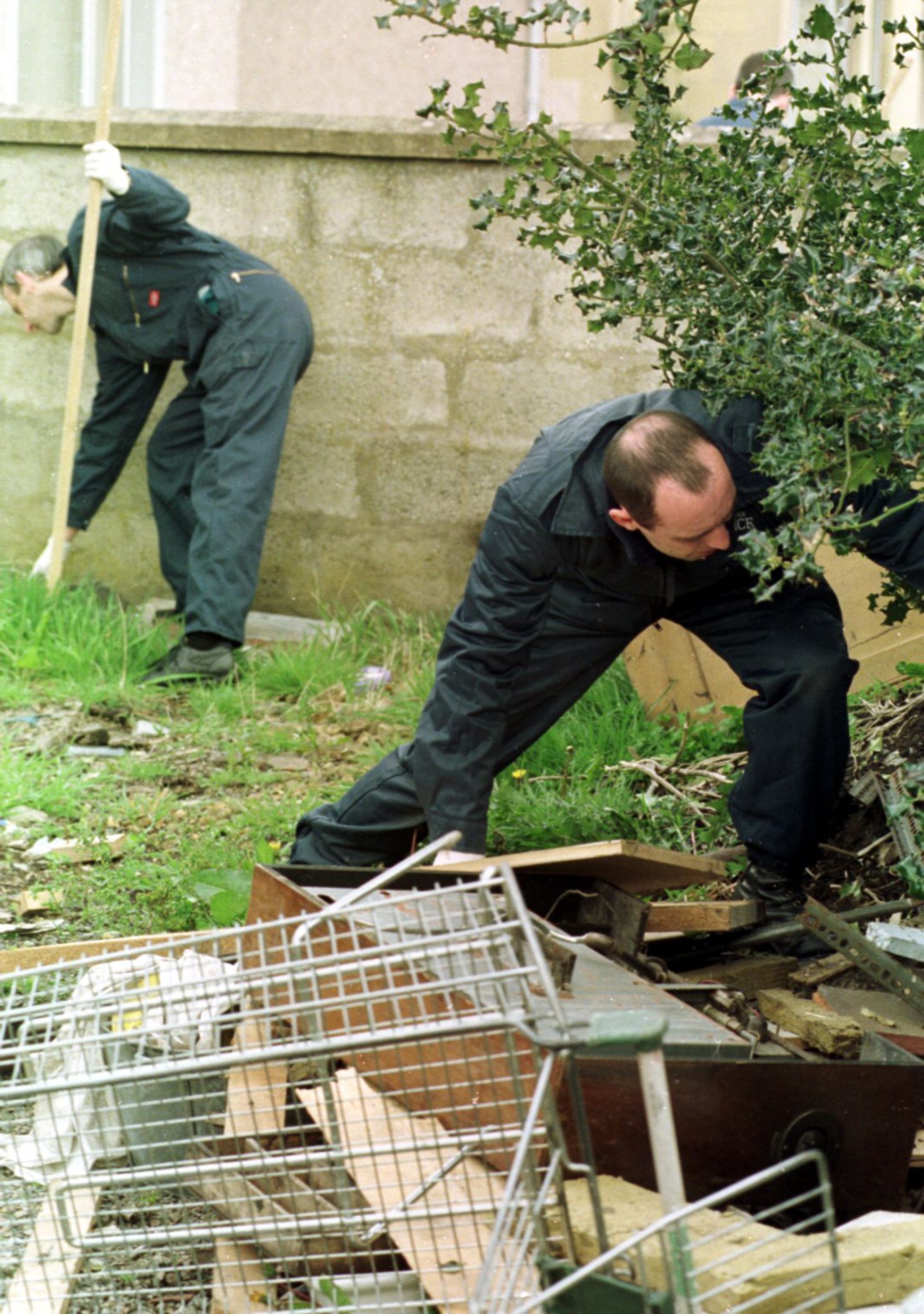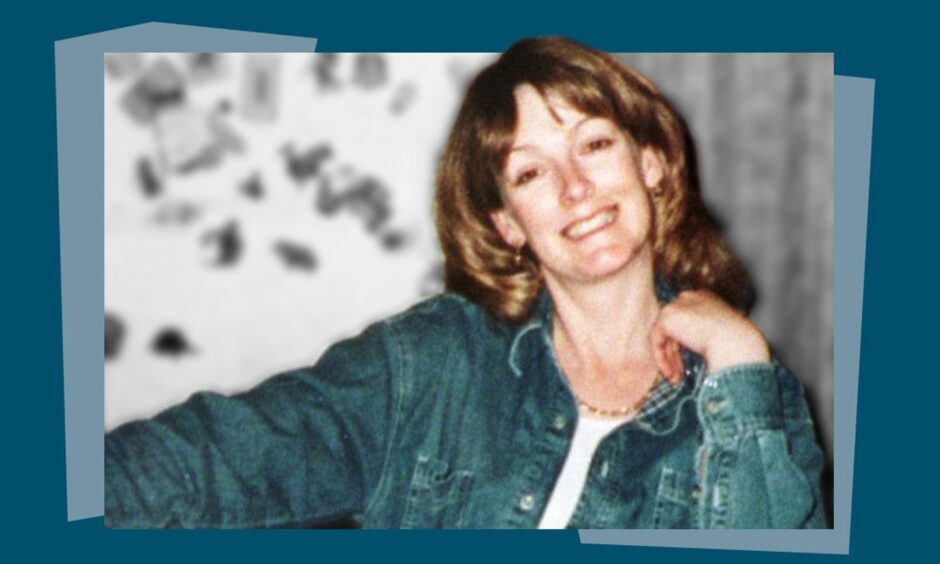
After Arlene Fraser was reported missing on April 28, 1998, the police response was huge.
And by the early hours of the following day – the 29th – the police investigation was quickly moving through the gears.
Carol Gillies – Arlene’s sister – remembers being woken up at 2.30am by a knock at the door of her home near Glasgow.
“There was a policeman standing there from Strathclyde Police and he said, ‘Is Arlene here?’
“I said ‘why would she be here?’.”
It was at that point Carol found out her sister was missing.
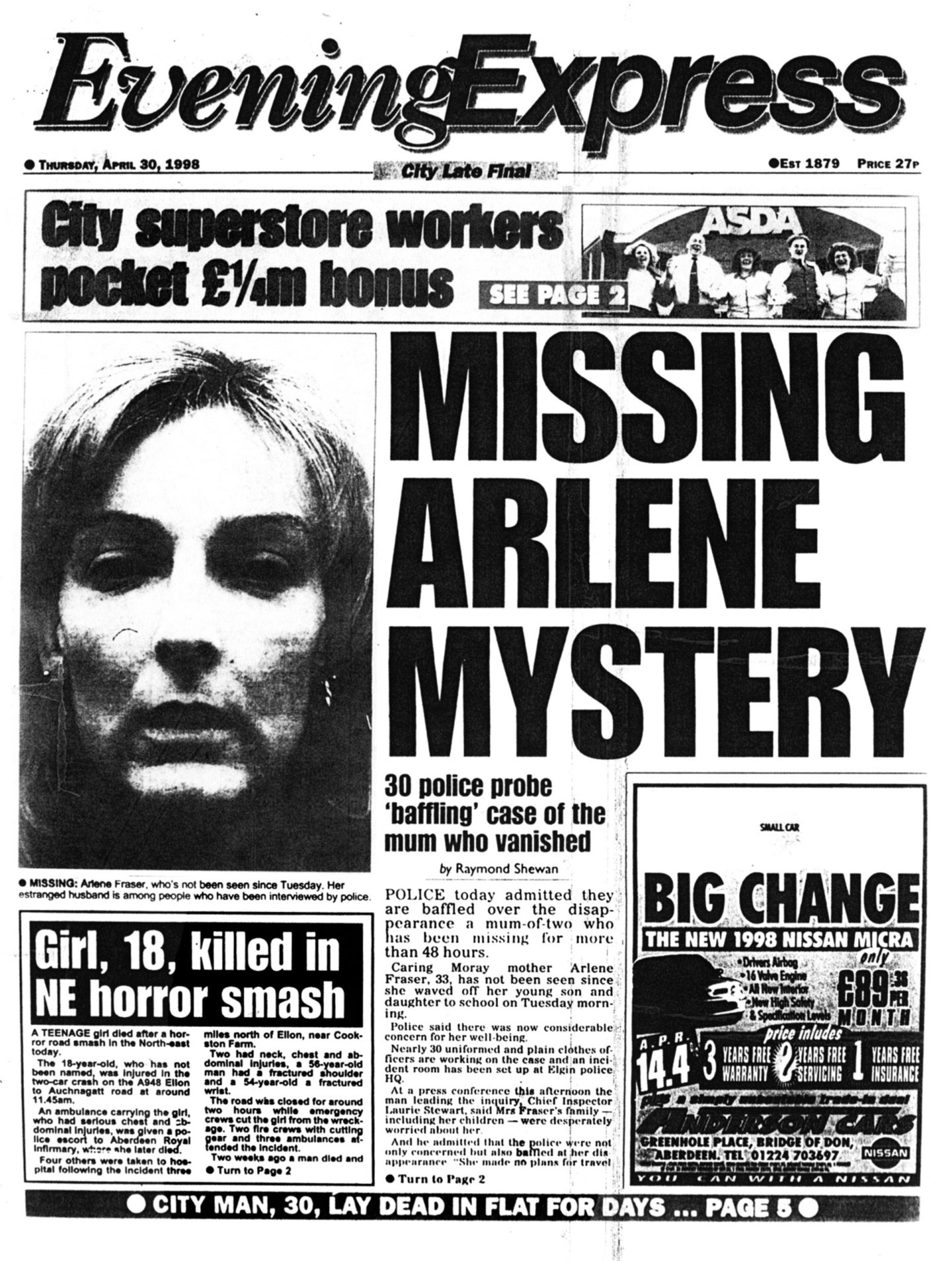
At the time, Arlene’s estranged husband Nat Fraser was on bail accused of attempting to murder her.
He was banned from the family house at 2 Smith Street, New Elgin.
He was instead staying with lifelong pal Ian “Pedro” Taylor a few miles away in Lhanbryde.
Police had to check if Arlene was at that property and inform Nat his two children, Jamie, 10 and Natalie, five, were staying with family friends.
So they called him on Taylor’s landline around 3am.
Suspecting Nat Fraser
It was during that call detectives began to suspect Nat.
This was because the children’s school had already called Nat the previous afternoon as they could not contact Arlene.
Arlene’s neighbour Graham Higgins, who was a family friend of Arlene, later told a court he too had called Nat the previous evening to say Arlene was missing and their kids were at his house.
So police did not believe Nat when, during that 3am phone call with officers, he acted as though news of Arlene missing was out of the blue.
Retired Detective Superintendent Alan Smith, who was the deputy senior investigation officer in the case, described Nat’s actions on that call.
He said: “Nat said: ‘oh, what’s happened here? Let’s go into Elgin and check the hospitals!’”
Sat beside him in the living room having been woken by the call, Taylor – known as Pedro – was bemused by Nat’s reaction.
Mr Smith who was familiar with the conversation in his role as a senior investigator in the case, added: “Pedro was listening to this and is saying: ‘Nat, why are you getting yourself all bent out of shape over this? There’ll be an obvious explanation’.
“Nat overdramatised the whole thing.”
It was at this late hour that detectives got their first insight into Nat’s character and his conniving attempts to cover his own tracks.
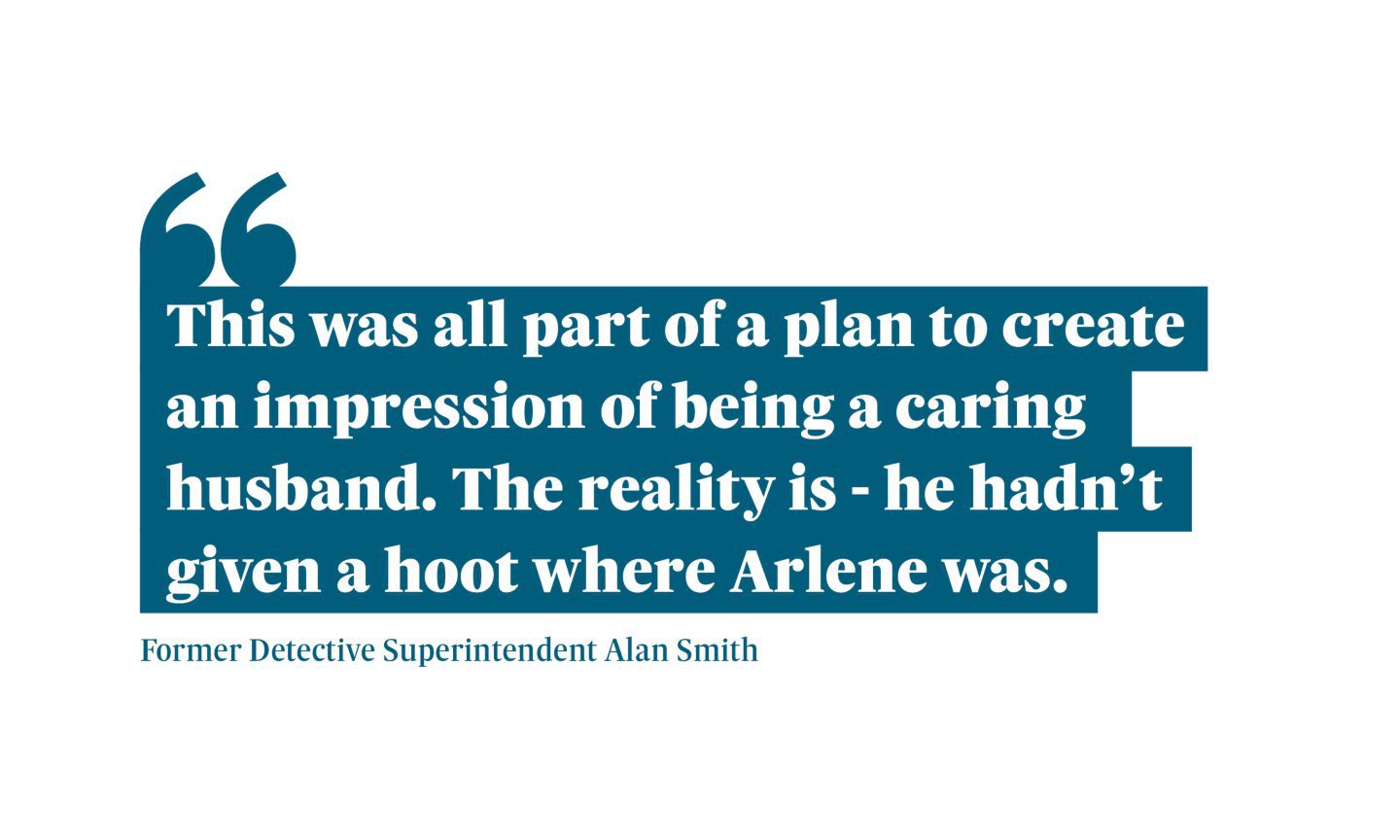
Mr Smith said: “This was all part of a plan to create an impression of being a caring husband.
“The reality is – he hadn’t given a hoot where Arlene was.”
The pressure was on
As dawn broke, a team of Grampian Police CID detectives travelled from Aberdeen to Elgin – and they were on high alert from the start.
Alan said: “Very quickly because of Nat’s profile and the awareness of the attempted strangulation weeks earlier, Arlene was immediately red-flagged as a highly vulnerable missing person.
“It very quickly escalated to CID.”
This was before Police Scotland was formed, so Alan’s first job was to ask Scotland’s other 12 policing divisions to be on the lookout for Arlene.
Detectives went to Arlene’s home at 2 Smith Street and took a video of the place from top to bottom.
That might seem an unimportant detail – but the video became a huge factor in the case in the years that followed, as we will see later in our series.
Detectives took statements from everyone immediately involved: They included:
- Michelle Scott, Arlene’s best friend who discovered the house empty.
- Marion Taylor, Arlene’s friend who had spoken to her two days earlier.
- Graham and Irene Higgins, who selflessly took in Jamie and Natalie the night before.
- New Elgin Primary School staff about the phone calls.
- Nat Fraser.
And the pressure was on – and in no small part due to another major police case.
Earlier in 1998, Grampian Police had received a damning report criticising how they dealt with the case of Scott Simpson.
The nine-year-old had been abducted close to his Aberdeen home in July 1997 and it took police four days to find his body, despite claims they had already searched the patch of land where it was found.
Mr Smith said: “This was a point in time where Grampian Police had been taken through the eye of a needle for Scott Simpson and it was not good reading.
“The last thing the force executive was going to allow here was criticism that we didn’t give the Arlene Fraser case our full attention.
“The resources that were applied to Arlene’s investigation were second to none. I’ve seen nothing like it.”
And what they established was startling.
Nat Fraser’s Elgin alibi
Arlene had called the children’s school at 9.40am and Michelle Scott found the house unoccupied at 10.30am.
Arlene had left behind her glasses, contact lenses, crucial medication and bank card.
Mr Smith said: “There was a 50-minute window. That was the crux of the entire case.”
The first interview with Nat proved illuminating as he proudly announced his cast-iron alibi for the day before.
Mr Smith said: “Nat took a young lad (Grant Fraser – no relation) on the fruit-and-veg delivery round with him that day, which was out of character.
“He very rarely did that. It was belt and braces (in covering his alibi).
“Nat was very conscious of the time, throughout that day, in his conversations with people.”
Around 9am, Nat parked his work van in Elgin town centre and made a call from a phone box.
He was calling Hazel Walker, who lived in Fochabers.
Hazel, 29, later told a court she was having marriage difficulties around this time and she had gone to the Grant Arms Pub 10 days before this phone call to watch her uncle play in a band, The Minesweepers.
There, she met fellow Minesweeper Nat and gave him her phone number.
She told the court he called her every day after the gig.
Hazel added: “He told me on Monday what time he would phone me the next day (the day Arlene went missing).”
This was the first time he had pre-arranged a time with her.
She told the court: “We really didn’t speak about anything. I never heard from him again.”
Hazel insisted she never had a relationship with Nat.
Mr Smith said: “She felt Nat was just stringing out his call for the sake of stringing out the call, y’know ‘when are you going to get to the point?’”
Crucially, the phone call ended at 9.40am – at the exact time Arlene called the school.
Mr Smith said: “When we spoke to Hazel and she learned the significance of the timing she said: ‘Yeah, I can see what he was doing now. I was used’.”

Michelle Scott said: “Nat was on the phone for 40 minutes during working hours.
“It was as if he was setting up his alibi because he knew something was happening that day.
“He must have scanned Elgin looking for the only phone box that had CCTV pointing to it.”
She added: “I always thought Nat organised it, but somebody else did it. He had a solid alibi for that day.”
Car linked to Arlene’s disappearance
Police were certain Nat played no direct role in Arlene’s disappearance.
But one vital detail helped detectives.
In the early hours of April 5, Arlene was sleeping at her Smith Street home and her mum, Isabelle Thompson, was there too.
They were woken by the sound of flames roaring outside.
The family’s Ford Granada car was on fire and left destroyed.
Just days earlier, divorce negotiations between Arlene and Nat had begun.
Marion Taylor said: “Arlene knew fine well it was Nat who did it.
“She told me: ‘That will suit Nat fine. That’s to keep me totally isolated in the house so he knows what I’m doing’.”
Mr Smith said “The car setting on fire undoubtedly was Nat.
“We never proved that conclusively but working on the basis it was Nat or set up by Nat – why did that happen?”
That helped detectives form a “working hypothesis” of what happened to Arlene.
They believe that, at some point in the 50-minute window, someone known to Arlene called at the door with a replacement car for her, sent by Nat.
Mr Smith said: “We know Arlene was highly dependent on her car. She wasn’t one to walk anywhere.
“Without a car, she was very isolated.”
“Was this a rouse to give her a runaround car? And that’s what took her out that day?
“Did someone appear at the door offering to take her out on a test drive, with Arlene thinking she would be back in a matter of minutes?
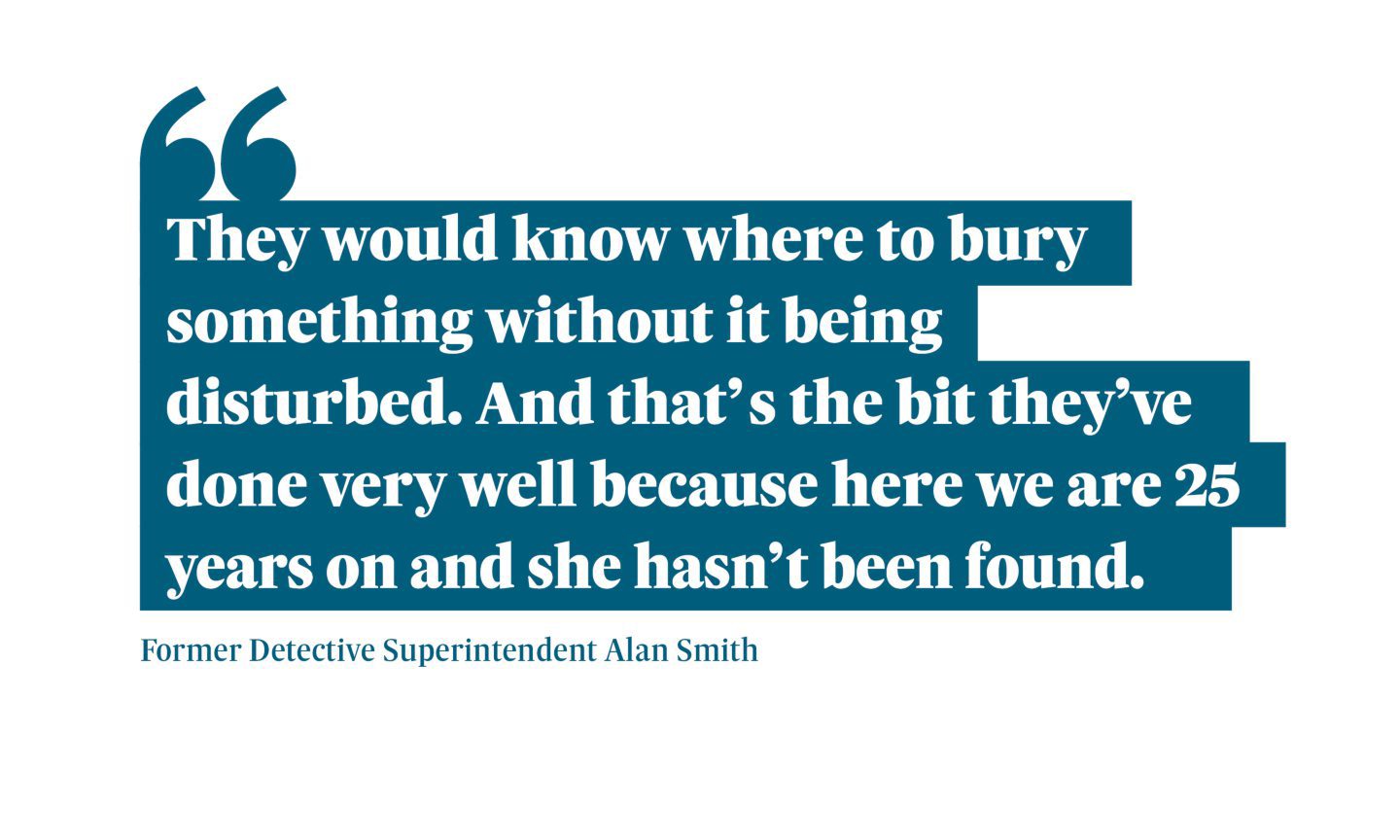
“Our hypothesis was that something has happened to Arlene and there would have been a pre-determined location that she was taken to as a deposition site.
“Nat and some of his people know the land of Morayshire very well.
“They would know where to bury something without it being disturbed.
“And that’s the bit they’ve done very well because here we are 25 years on and she hasn’t been found.”
Detectives did not think much of the idea that Arlene had been snatched from inside the house, though it remains a possibility.
Mr Smith said: “It is possible that someone came in, overpowered her and didn’t create a stramash.
“Arlene was only a little toot. She was only 5ft. You could wrap her up in something and take her out.
“But someone would have heard it.
“It was a house that had attracted attention in the past.”
He added: “People knew Nat Fraser. If you live on a street and there’s a family that has had issues, it becomes widely known.”
Michelle Scott said: “It was maybe typical of most streets, with nosy neighbours.
“People noticed comings and goings and would have heard someone shouting if they were being taken away.”
Mr Smith said: “Whatever happened that morning, Arlene went somewhere under her own volition with someone she trusted and then something befell her away from that location.
“But it’s not known. People often say to me ‘I bet you know the real story’.
“But no – there isn’t a smoking gun here.”
Family’s suspicions of Nat Fraser
During the next two days, police carried out forensic searches at the Smith Street house – where Arlene was last seen – before releasing the property to her family.
That led to tension among Arlene’s loved ones and Nat – but also allowed police to keep tabs on Nat’s actions.
Mr Smith said: “Arlene’s parents moved into the family home.
“Arlene’s mum and dad Isabelle Thompson and Hector McInnes are estranged – so their partners moved in.
“Arlene’s two kids were there too and her sister Carol moved up and she was looked after the kids.
“Of course, Nat being Nat, he was there playing the role of ‘the concerned husband’.
“It was a busy house. We put in a family liaison officer (Willie Robertson) to be there with them.”
Arlene’s family knew Nat had assaulted Arlene before and that she had previously fled to a centre for domestic violence victims.
Mr Smith said: “Their interpretation was something had happened to Arlene.
“And they knew that whatever had befallen Arlene would have been at Nat’s hands.
“They put two and two together quicker than we had. It was blindingly obvious to them.
“The family acknowledged Nat had every right to come to the house and see the kids from a welfare perspective, but they had no time for him.”
‘He’s done something to her’
Michelle Scott said the atmosphere was awkward.
She said: “I had to go round the house with police to see if anything was missing.
“I will always remember Nat coming to the house and acting normal.
“Arlene’s mum Isabelle was living there when the car went on fire, so I think she was aware of what was going on.
“I always remember the day she went missing, I said to the police ‘he’s done something to her’ – that was based on what had happened previously.
“And I think that was her mum’s belief as well. So there would have been tension.
“He was so cocky.
“Isabelle said to me: ‘What does he keep coming round for? Why is he here all the time?’
“But maybe she didn’t want to say anything to Nat to keep the peace and with the kids being there.’”
This was all happening with family liaison officer Willie Robertson there.
Arlene’s friend Marion Taylor said: “When police interviewed me, I said to Willie: ‘Nat has done something to her. There’s no way she would have left the children.’
“Willie was like ‘no, no no. Nat wouldn’t have done anything. I’ve known that laddie since he was a young boy’.
“By God did he change his mind.
“Years later, Willie said to me: ‘oh boy, I’m so wrong there’.”
Later, Arlene’s step mum Catherine McInnes told a court how Nat became agitated when Isabelle asked him if he knew where Arlene was.
Catherine said: “He did not like being questioned. Isabelle was crying.
“Nat was jumpy and his eyes were rolling in his head. It was really strange.”
While Arlene’s family prioritised the needs of Jamie and Natalie, police had their work cut out with the investigation.
It was a case that would take many dramatic twists and turns – involving psychics, psychologists, lip readers, rumours, lies and misdirection.
And the next chapter began with a crucial – overlooked – phone call.
We asked Nat Fraser, Ian ‘Pedro’ Taylor and the family of Graham Higgins for comment and all declined.
We made attempts to contact Hazel Walker and Willie Robertson but were unsuccessful.
Read part three next
If you would like to speak to our Impact investigations team about the case, please email Dale.Haslam@eveningexpress.co.uk.


